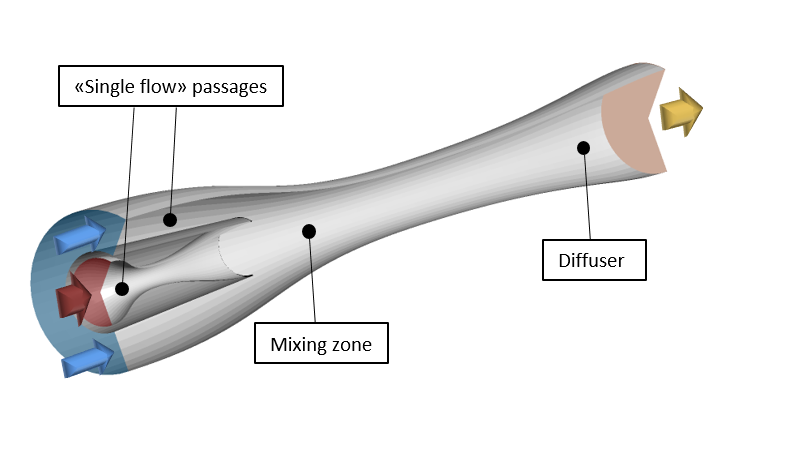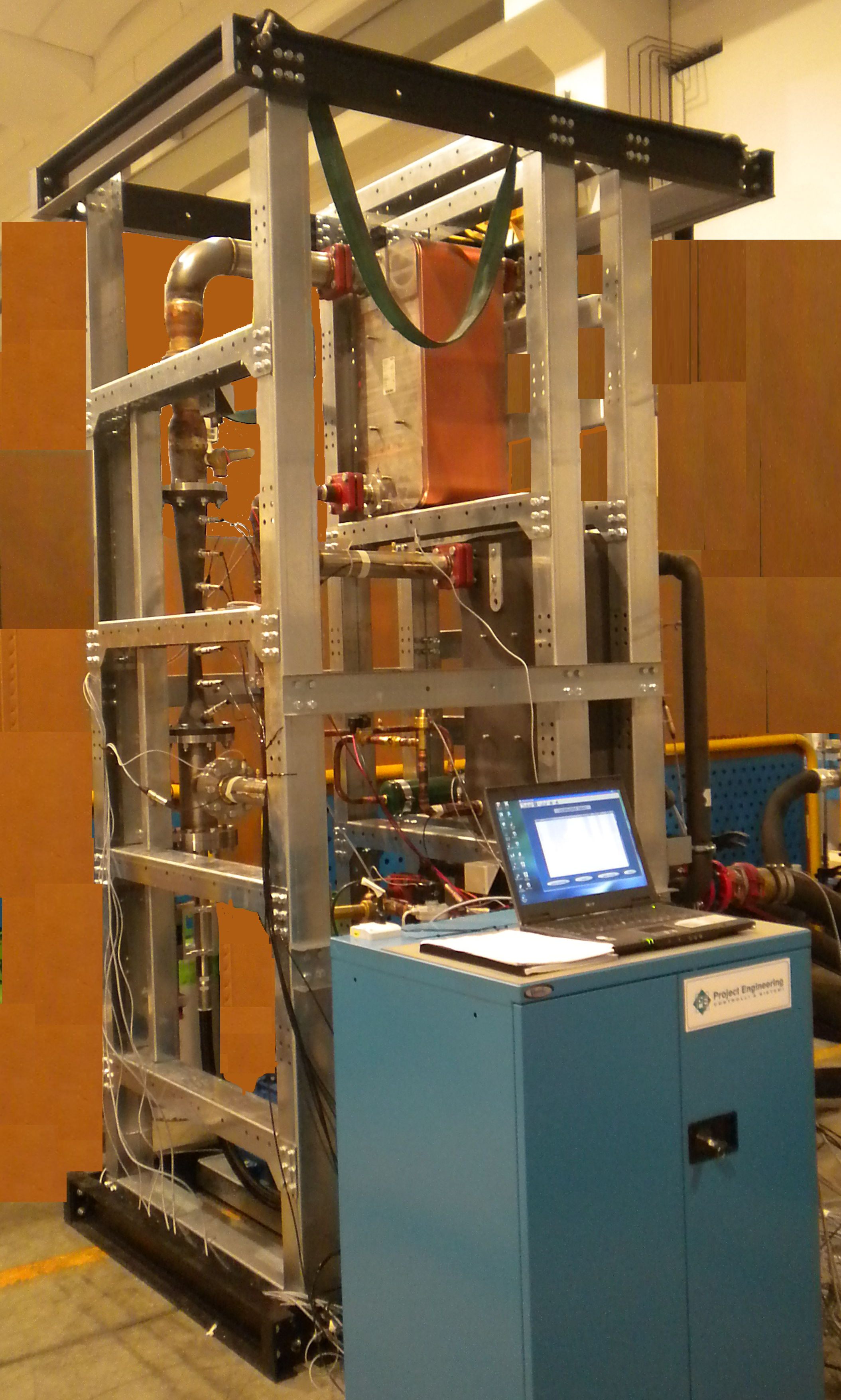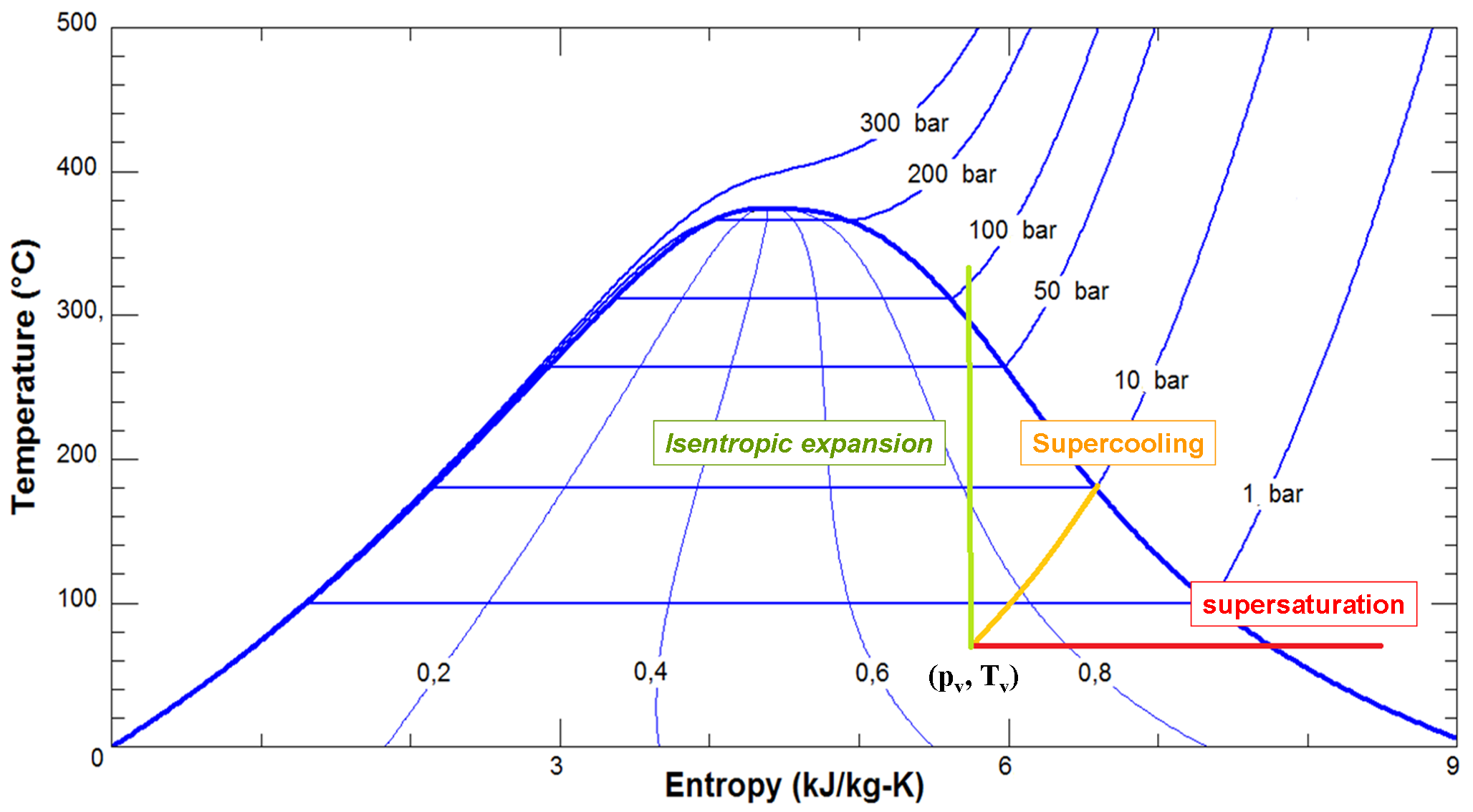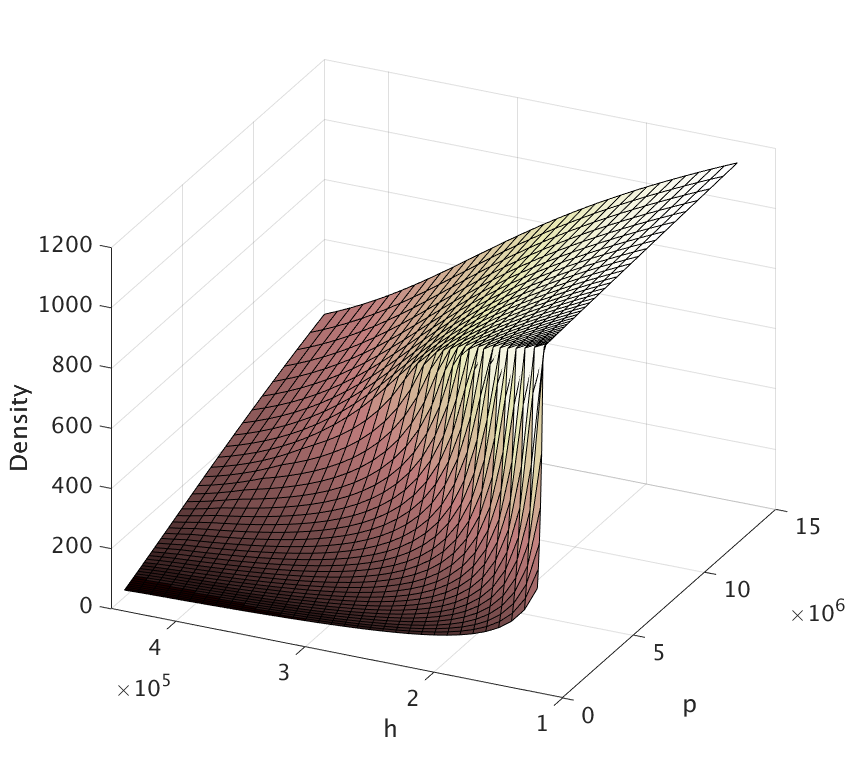Thermo Group
Ejector Refrigeration
|
Supersonic Ejectors are passive compression devices that can be employed for a range of applications, from aeronautic high-speed propulsion systems, to nuclear reactor cooling, pumping of volatile fluids in power plants and compression of working fluid in refrigeration systems. The use of ejectors in refrigeration applications discloses promising alternatives to standard vapor compression and absorption cycles. These alternatives constitute the subject of our research. |
 |
Industrial Ejector Chiller, IEC:
|
Scope and Goals: The aim is to develop and optimize a large scale ejector chiller for industrial use. The system may operate on waste heat and solar power resources. The low production costs, simplicity and high reliability of the system may represent competitive features with respect to standard vapour compression and absorption systems.
Status of research and critical aspects: Currently, a test bench of 40kW of cooling power is running at our laboratories. The plant was built in collaboration with Frigel S.p.a. (Scandicci, Italy) and its COP has reached 0.5. An optimization of the supersonic ejector design is required to increase the cycle efficiency and condensing temperature. Passive configurations are also attempted by substitution of the pump by means of injectors.
Future research and thesis proposals: a) Test of new refrigerants inside the plant. Experimental and CFD analysis of alternative refrigerants on the existing geometry. Design of a new ejector profile suitable to the refrigerant properties. b) Design and installation of a liquid/gas injector to substitute centrifugal pump. c) CFD-based optimization of the supersonic ejector profile. Development of a theoretical 1D model of the supersonic ejector to give a first approximated profile. Entropy generation analysis using CFD. Detailed numerical optimization by means of CFD analysis coupled with a suitable optimization algorithm. |
 |
Steam Ejector Cycle, StEC:
|
|
Scope and Goals: The aim is to build a new supersonic ejector cycle working with steam. The system can operate with solar energy or waste heat from industrial applications. The absence of turbomachinery and the use of water makes the system extremely cheap, simple and reliable. These features may be ideally suited for use in developing countries. |
|
Status of research and critical aspects: Of importance in this research is the development of reliable numerical tools. In this respect, the prediction and analysis of the condensation shocks is a complex but fundamental aspect. Furthermore, the description of the steam properties in metastable regions and the prediction of ice formation are critical for the correct operation of the system. Partner of this research are the Université Catholique de Louvain (Belgium) as well as the Ural Federal University (Russia). Exchange programs and International PhD degree are available.
Future research and thesis proposals: a) Construction of a new Steam Ejector Cycle. Project and sizing of the main components of the system as well as the measurement apparatus. CFD-aided design of the Two-Phase steam ejector. b) CFD analysis of the supersonic steam ejector. Development of modelling tools for the prediction of ice formation. Extension of the steam property libraries inside the meta-stable region. |
|
Ejector Expansion Cycles, EEC
|
Goals and Scope: The aim is to exploit the simplicity and reliability of supersonic ejector to replace the expansion valve without recurring to complex turbo-machinery solutions. The recover of expansion losses inside conventional refrigeration systems can lead to COP increase of 5-12% depending on the specific application and refrigerant. |
|
|
Status of research and critical aspects: The most critical aspect of this activity is the simulation of the flashing expansion of the refrigerant within the supersonic ejector. Thermo group is currently developing specific CFD models to simulate the flashing of CO2 in compressible and metastable conditions.
Future research and thesis proposals: a) CFD analysis of the two-phase flashing flow inside the ejector. Literature research on the physics and models of the high speed cavitation and related fields, like supersonic propulsion. b) Development of new numerical procedure by means of open source software, like OpenFoam or dedicated software from aerospace research. |
|
Selected publications for ejector refrigeration:
- G. Grazzini, A. Milazzo, F. Mazzelli, Ejectors for Efficient Refrigeration - Design, Applications and Computational Fluid Dynamics, Springer, 2018
- F. Giacomelli, F. Mazzelli, A. Milazzo, A novel CFD approach for the computation of R744 flashing nozzles in compressible and metastable conditions, Energy 162, 1092-1105, 2018
- F. Mazzelli, F. Giacomelli, A. Milazzo, CFD modeling of condensing steam ejectors: Comparison with an experimental test-case, International Journal of Thermal Sciences 127C, 7-18, 2018
- Grazzini, G., Milazzo, A., Piazzini, S., 2011. Prediction of condensation in steam ejector for a refrigeration system, International Journal of Refrigeration 34, 1641-1648.
- Grazzini G., Rocchetti A., 2008. Influence of the objective function on the optimisation of a steam ejector cycle, International Journal of Refrigeration 31, 510-515
- Grazzini, G., Rocchetti, A., 2002. Numerical optimisation of a two-stage ejector refrigeration plant, International Journal of Refrigeration 25, 621-633.
- A. Milazzo, F. Mazzelli, Future perspectives in ejector refrigeration, Applied Thermal Engineering, 121, 344–50, 2017
- G. Grazzini, F. Mazzelli, A. Milazzo, Constructal design of the mixing zone inside a supersonic ejector, International Journal of Heat and Technology, Volume 34 (2016), pp. S109-S118
- Mazzelli, F., Milazzo, A., 2015. Performance analysis of a supersonic ejector cycle working with R245fa. Int. J. Refrigeration 49, 79-92
- Grazzini, G., Milazzo, A., Paganini, D., 2012. Design of an ejector cycle refrigeration system, Energy Conversion and Management 54, 38-46
- Milazzo, A., Rocchetti, A., 2015. Modelling of ejector chillers with steam and other working fluids. International Journal of Refrigeration, 57, 277-287
-
F. Mazzelli, F. Giacomelli, A. Milazzo, CFD modelling of the condensation inside a Supersonic Nozzle: implementing customized wet-steam model in commercial codes, Energy Procedia, 2017
- F. Giacomelli, F. Mazzelli, A. Milazzo, CFD modelling of the condensation inside a cascade of steam turbine blades: comparison with an experimental test case, Energy Procedia 126, 730-737, 2017


